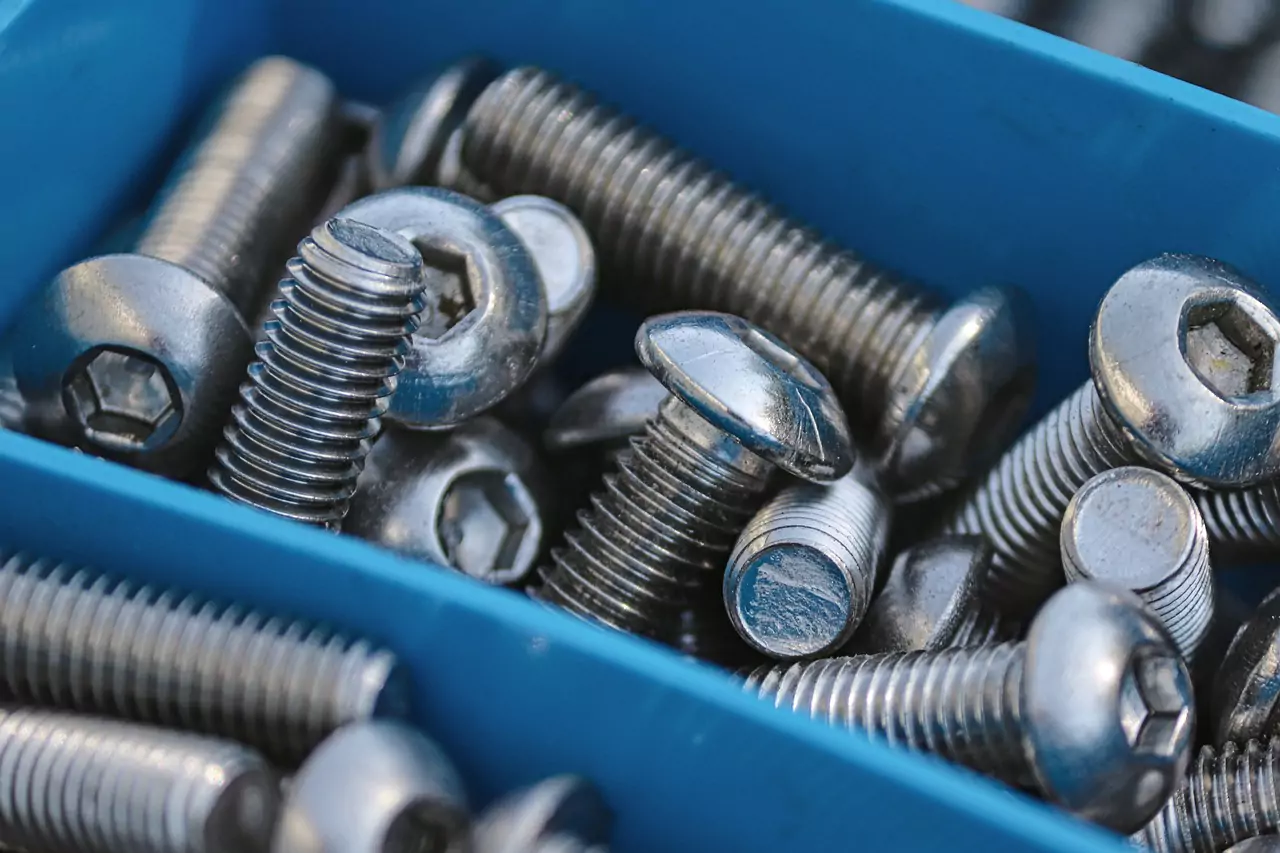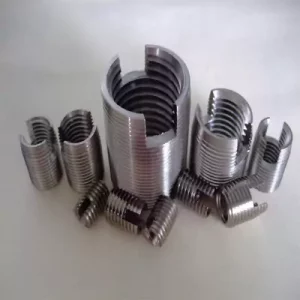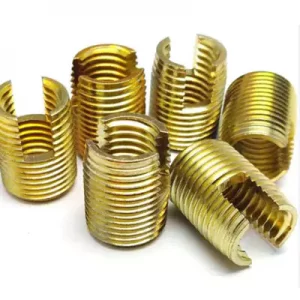caTEGORIES
Tags
How to Secure Threaded Inserts for Maximum Durability and Stability

Posted: August 19, 2024
Categories: News
Threaded inserts are essential components in woodworking and manufacturing, providing strong anchoring points for screws and bolts. Proper installation and securing of these inserts are crucial to ensure durability and stability, preventing issues such as loosening and rotation over time. This article will guide you through the necessary steps to install threaded inserts, secure them for long-term use, and address any potential issues like looseness or damage.
What Are the Steps to Install Threaded Inserts?
Choosing the Right Insert for Your Wood Type
Choosing the appropriate threaded insert for your wood type is pivotal for achieving optimal results. Inserts come in various designs, such as inserts for softwoods or hardwoods, each tailored to specific density and grain characteristics. By selecting an insert that complements the wood, you can ensure better grip and stability. Additionally, consider the load requirements and the expected stress the insert will endure to select an insert capable of withstanding those conditions.
Preparing the Wood for Installation
Before installing the threaded insert, proper preparation of the wood is necessary. Start by accurately marking the desired location for the insert to ensure precise drilling. Using the appropriate drill bit size is also important; it should match the insert’s diameter for a snug fit. Drill straight to avoid misalignment, which can lead to complications during installation. After drilling, clean the hole of any debris or splinters to allow the insert to fit properly, ensuring a solid connection.
Installing the Threaded Insert
Once preparation is complete, you can proceed to install the threaded insert. It’s recommended to use a tool or a driver that aligns with the insert, allowing for a controlled installation. Begin by gently threaded the insert into the prepared hole, applying steady pressure. Be cautious not to overtighten, as this may damage the wood or the thread. Ensure the insert sits flush with the wood’s surface, as this guarantees a stable foundation for securing other components.
How to Secure Threaded Inserts for Long-Term Use?
Using Adhesives for Added Security
To enhance the durability and stability of threaded inserts, consider applying adhesives. Certain types of epoxy or specialized thread-locking adhesives can provide additional strength, preventing the insert from loosening over time. Be sure to apply the adhesive carefully around the external threads before inserting. This practice not only secures the insert in place but also protects against moisture, which can lead to wood expansion and contraction, potentially loosening the insert.
Preventing Insert Rotation and Pull-Outs
Preventing insert rotation and pull-outs is critical for maintaining the integrity of the installation. To achieve this, utilize inserts with flat heads or grooves that lock into the wood, limiting movement. Furthermore, consider using oversized washers or locking nuts in the assembly to distribute loads evenly and reduce pressure on the insert. Proper torque specifications while fastening screws into the inserts is also important; over-torquing can lead to fatigue and failure.
How to Address Loose or Damaged Threaded Inserts
Methods to Securely Reinstall Removed Inserts
If you discover that a threaded insert has become loose or damaged, timely intervention is crucial to restoring its functionality. One effective method is to remove the insert and re-install it with a compatible adhesive. Make sure to clean the hole thoroughly and inspect the insert for any signs of damage before proceeding. If the threads are worn, consider reinforcing the area with insert patches or new sleeve designs that provide extra support for the required loading conditions.
Reinforcing with Insert Patches or New Sleeve Designs
Using insert patches or new sleeve designs can effectively reinforce the connection when dealing with worn or damaged threaded inserts. These patches often provide a wider surface area, distributing stress more evenly across the wood. Furthermore, new sleeve designs may feature enhanced threading or coating to improve grip and stability. Evaluate the design of available patches to select one that matches your specific requirements and application.
Applying Wood Glue or Epoxy to Outer Threads
In addition to using patches, applying wood glue or epoxy to the outer threads can create a firm bond within the wood hole. By filling gaps with adhesive, you can eliminate movement and enhance the connection between the threaded insert and the surrounding material. Apply the adhesive during reinstallation for optimal results, ensuring it penetrates thoroughly into all available spaces for maximum grip and stability.
Regular Maintenance Tips to Prevent Future Issues
To prevent future problems with your threaded inserts, regular maintenance is advised. Periodically check the tightness of screws and bolts connected to the inserts, as they can loosen over time due to vibrations or changes in humidity. Additionally, inspect for signs of wear or damage to both the insert and surrounding wood. Maintaining an environment with stable temperatures and humidity levels will also help preserve the integrity of the wood and threaded inserts, minimizing the chances of failure.
By following these steps and tips, you can effectively secure threaded inserts for maximum durability and stability, ensuring their longevity for your project. Whether conducting new installations or addressing existing inserts, attention to detail in selection, installation, and maintenance will yield the best results.
Can You Reuse Threaded Inserts After Removal?
Techniques for Secure Re-Insertion
Reusing threaded inserts after they have been removed is viable, provided certain conditions are met. Initially, ensure that the insert is not damaged and the threads remain intact. If the initial installation caused any wear, it may be necessary to use an oversized insert or a different type altogether for better retention. Additionally, when re-inserting an old threaded insert, clean out the previous hole thoroughly. This step includes removing any debris, old adhesive remnants, or splintered wood to create a clean surface for reinstallation.
Utilizing a suitable adhesive during re-insertion reinforces the connection and offsets any wear on the original threads. Epoxy or specialized thread-locking compounds can effectively secure the insert in place, ensuring stability once reinstalled. Moreover, if the original hole has enlarged from removal, consider using a dowel or putty to fill the gap before reinserting the threaded insert. By following these techniques, you can successfully reuse threaded inserts without compromising the integrity of the wood.
Adding Reinforcement During Reinstallation
When reinstalling threaded inserts, reinforcing the area can significantly enhance structural stability. One method is to use threaded insert patches, which provide a broader contact area against the wood, greatly improving the load distribution. Selecting a patch that closely matches the original insert’s size and threading can ensure a snug fit, offering a reinforced connection that can withstand considerable stress.
Furthermore, employing wooden or metal dowels can add an extra layer of stability when a new insert is being installed into a repaired hole. By embedding a dowel firmly in the wood before installation, you create a fresh anchor point, which contributes to improved durability and stability. Applying a wood adhesive during all these processes can further enhance the security of your installation, effectively preventing future loosening of the insert.
Frequently Asked Questions About Threaded Inserts
Common Issues and Solutions
Threaded inserts, while advantageous for securing components, can face several common issues. One prevalent problem is the insert becoming loose over time, often due to improper installation or inadequate adhesive use. Regular inspection of the connections and ensuring screws are not overtightened can help manage this issue. To remedy a loose insert, you can apply some epoxy around the outer thread and reinstall it, allowing for better tension distribution.
Another common issue involves difficulty in removing or damaged threaded inserts. In these cases, utilizing a suitable extractor tool can facilitate removal without damaging the surrounding wood. If the insert is stripped, you might need to drill out the old insert entirely and install a new one after preparing the cavity adequately. Checking the insert’s compatibility with the material type is crucial to prevent these issues from becoming frequent.
Advanced Tips for Optimal Performance
To achieve optimal performance with threaded inserts, several advanced practices can be implemented. First, selecting the correct insert material is critical; using brass inserts in wood can prevent corrosion and wear due to moisture exposure. Additionally, the application of a thread-locking adhesive on the screws can provide additional security against loosening from vibration or thermal expansion.
Moreover, choosing inserts with unique designs, such as those with anti-rotation features, can improve performance significantly. Flat-head designs that integrate well with the wood surface prevent unintentional movements, enhancing stability. It’s also beneficial to maintain an even distribution of weight on screws attached to threaded inserts, as this reduces the risk of fatigue and failure over time.
Compliance with manufacturer’s specifications regarding installation torque is essential to prevent damage. Documenting the assembly process and any torque settings used can help maintain an effective log to refer back to during inspections or maintenance procedures. By integrating these advanced strategies, you can ensure the long-lasting performance of your threaded inserts.
By understanding the nuances of securing threaded inserts, from reinstallation to addressing common issues, you can guarantee that these components function effectively in your projects. The key is to remain vigilant concerning maintenance and installation practices, which significantly influence durability and stability over time. For professional maintenance services and high-quality threaded inserts, consider Qewit, a trusted high-tech enterprise with a proven track record of excellence in the bolts and screws industry.




